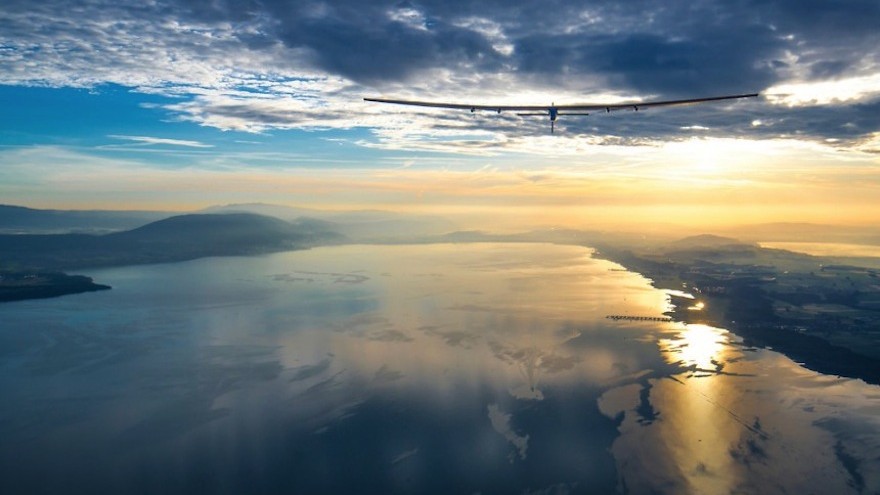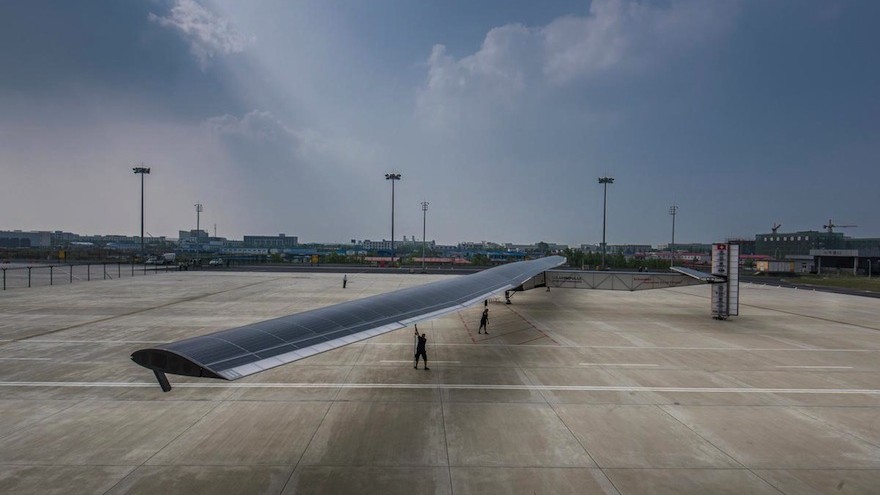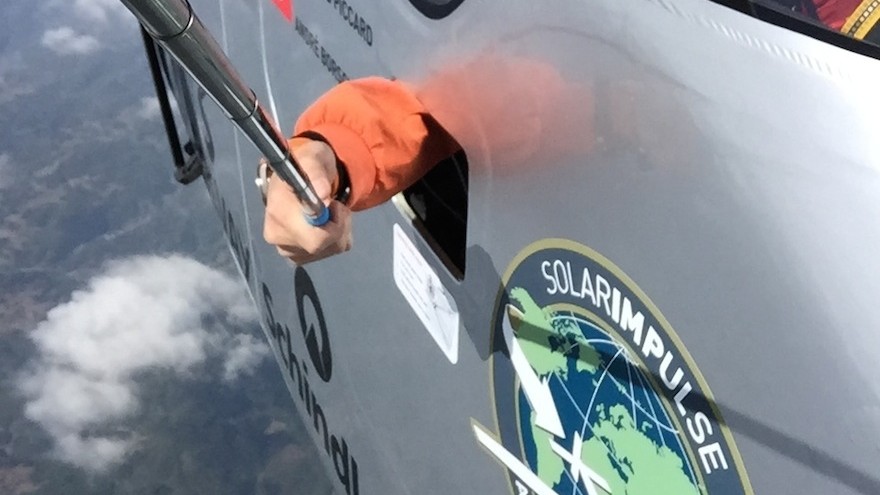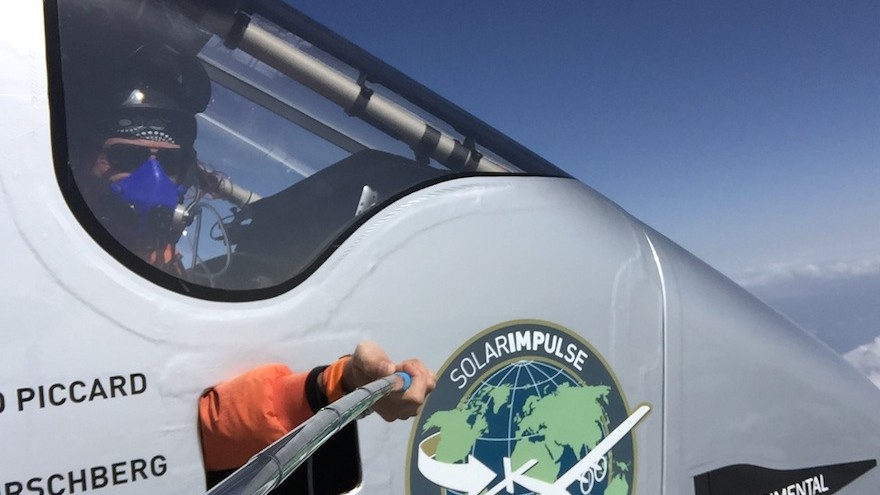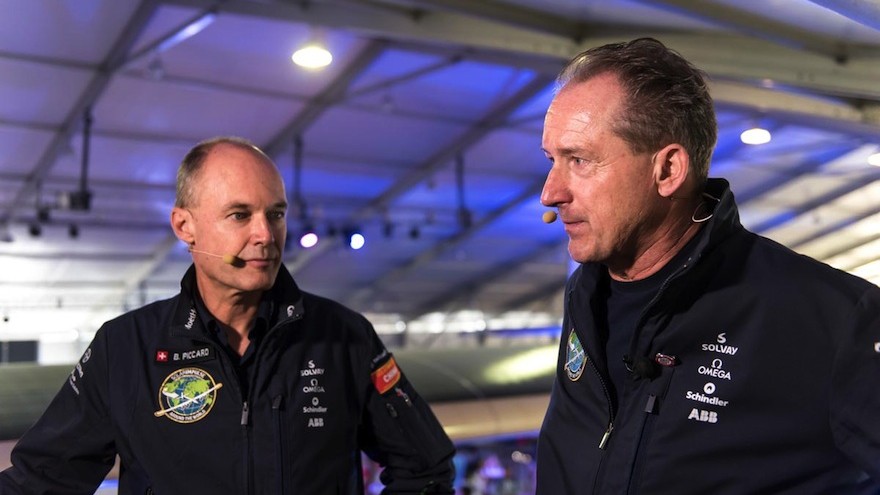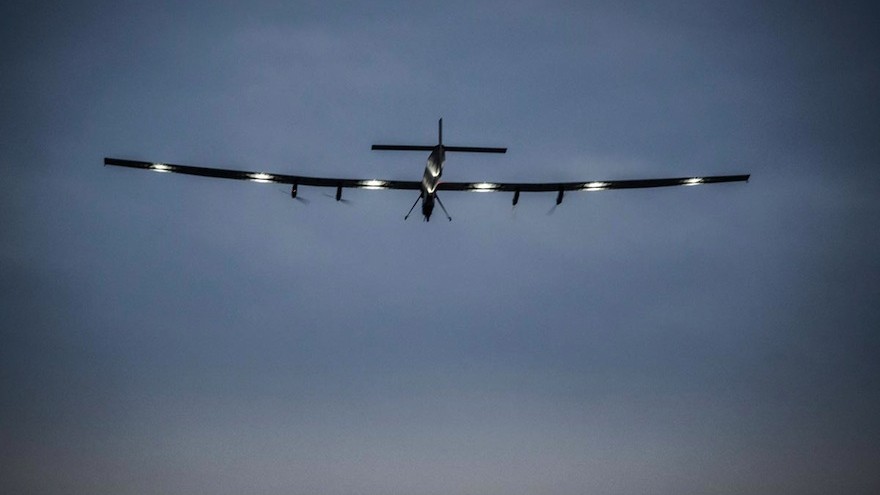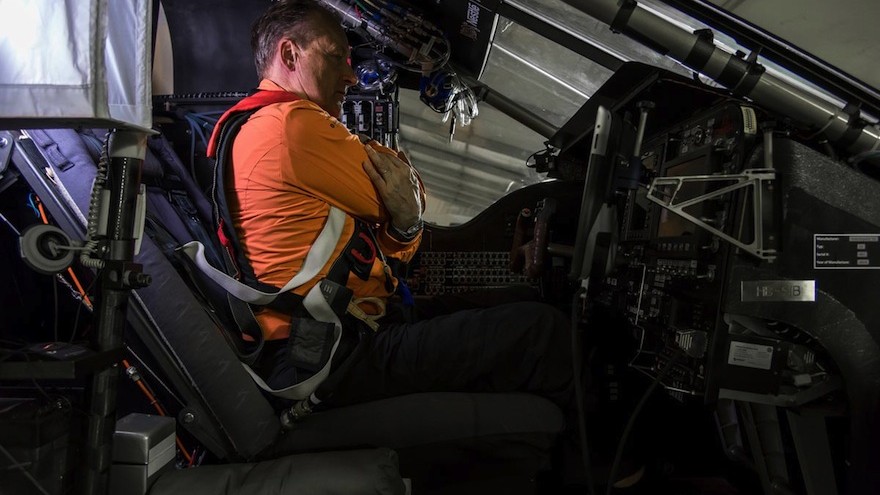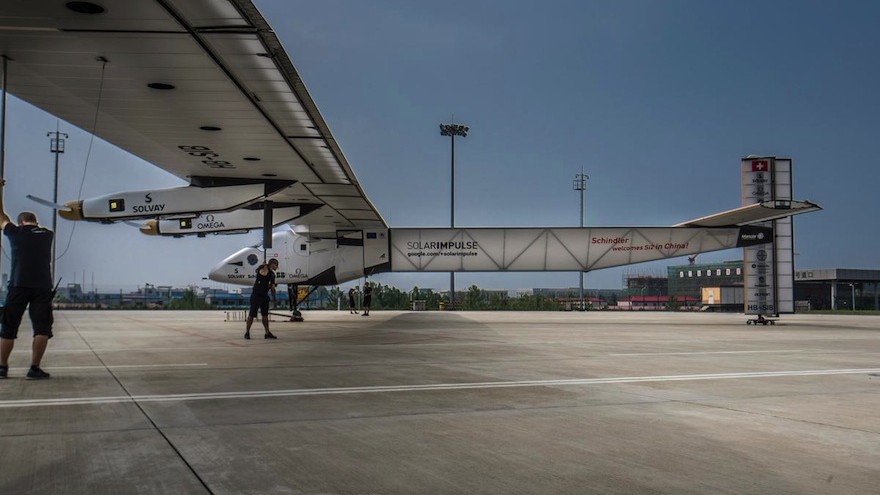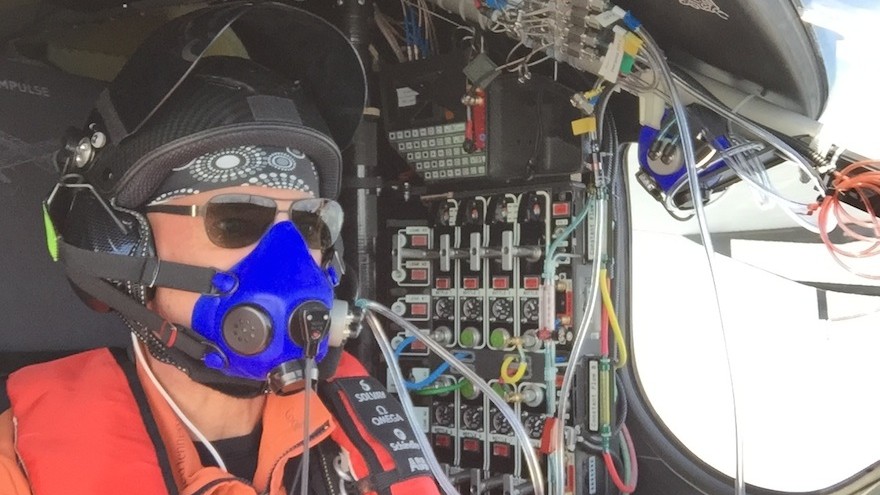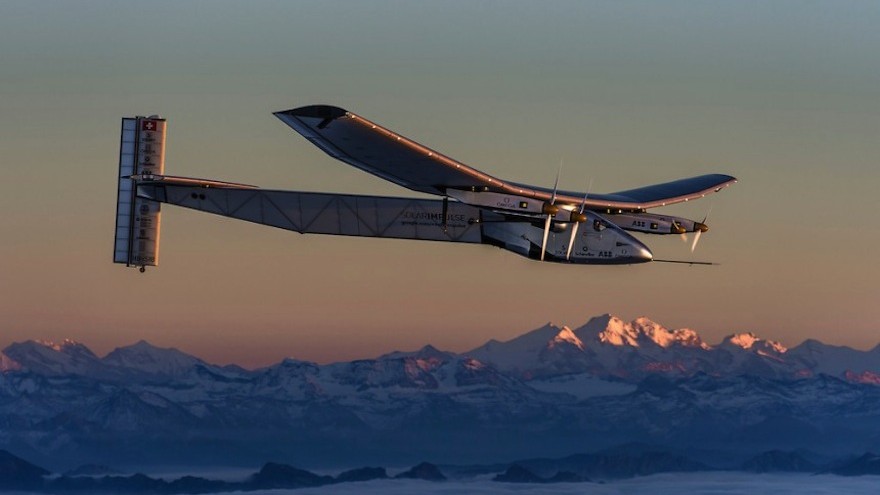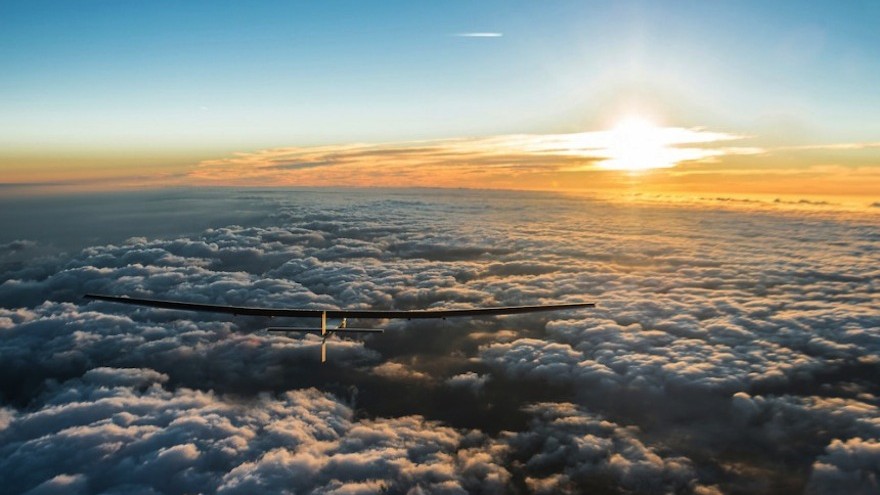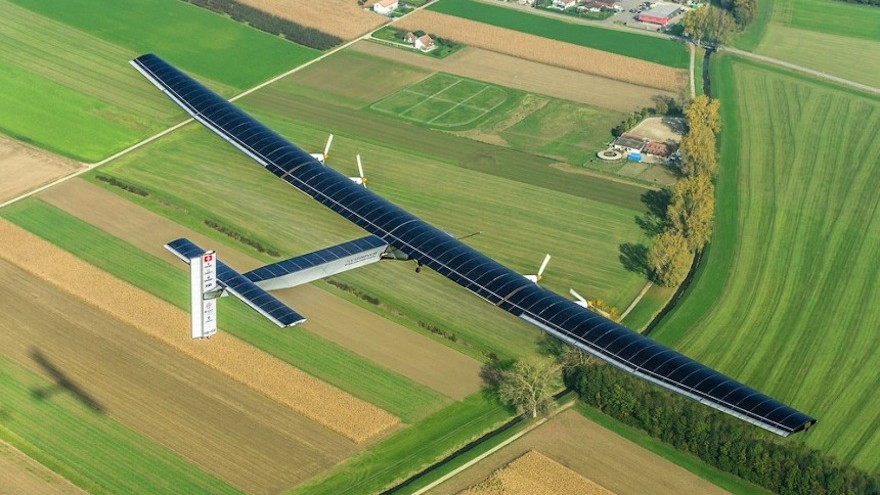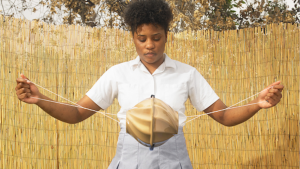From the Series
In November 2003 Swiss aeronaut Bertrand Piccard and his compatriot Andre Boschberg initiated a project that aimed to fly around the world without using a drop of fuel, powered by the sun. In March 2015, after 12 years of designs and concepts, and hundreds of engineers, technicians and suppliers, a specially designed solar aircraft took off on this very journey.
The aviation industry is one of the biggest challenges to green energy, burning more carbon per person per kilometre than any other form of mass transport. Piccard’s flight challenges the idea that innovative solutions can’t be found.
The craft in which this epic under-taking will be attempted is the Solar Impulse 2, a plane with a wider wingspan than a Boeing 747 (72 metres across), but which weighs only a fraction of the jet plane.
Coming in around the same weight as a family car, the Solar Impulse can only reach maximum speeds that are comparable to a road vehicle. Aviation experts have criticised its speed, but Piccard says they are missing the point. The journey, he argues, is not about breaking speed records but about attempting the impossible.
The Solar Impulse 2 is a single-seater, designed to carry one passenger on flights for up to 120 hours, flying through the day and night. Its vast wings are covered with over 17 000 solar cells and around a quarter of the planes overall weight is made up of lithium batteries that will charge during the day and allow the plane to continue flying through the night.
While navigating the craft, the pilot will only be able to take rests of 20 minutes, as the delicate plane cannot be left for long on autopilot. Both Piccard, a qualified psychiatrist, and Boschberg have been trained in self-hypnosis and meditation techniques to help them maintain focus in the cockpit. Unlike most aircrafts, the Solar Impulse’s cockpit is not pressurised in order to keep the overall weight of the aeroplane down.
The 35 000km journey from xx to xx is estimated to take the Solar Impulse 2 around five months, with 12 legs and stopovers in between. At every stop the Solar Impulse team will engage in discussions with local governments, organisations and thinkers on the topic of renewable energy.
The journey started on 9 March in Abu Dhabi and will end there in August this year. The plane is currently in Nanjing, China from where it will begin its longest leg across the Pacific Ocean. This leg of the journey will be the longest flight in distance and duration ever attempted by a solar powered craft.
Piccard is the third generation of a family of explorers. His grandfather, Auguste ,was also a balloonist known for building crafts that could go to great heights, and Bertrand’s father Jacques was an undersea explorer, known for developing underwater vehicles that could go to unimaginable depths. The Piccards, it seems, have the intrepid gene and are drawn to the very limits of man’s reach.
In 1999 Piccard successfully completed the first circumnavigation of the world in a hot air balloon, and it was during this 19-day trip that the seed of Solar Impulse was planted. The balloon nearly ran out of fuel while trying to remain airborne on a windless day above the Pacific, and at that moment Piccard decided that the next trip he would not use a single drop of fuel.
Both pilots acknowledge that solar energy is still decades away from solving the carbon emissions of air travel. But they hope that this journey will raise awareness and start a movement towards better efficiency in energy usage. The solar engine loses only three per cent of its energy to heat, where s a standard engine loses around 70 per cent.
Boschberg will fly Solar Impulse from Nanjing to Hawaii and Piccard will pilot the second half of the Pacific crossing from Hawaii to the US. The journey is set to continue no earlier than Monday 11 May.

